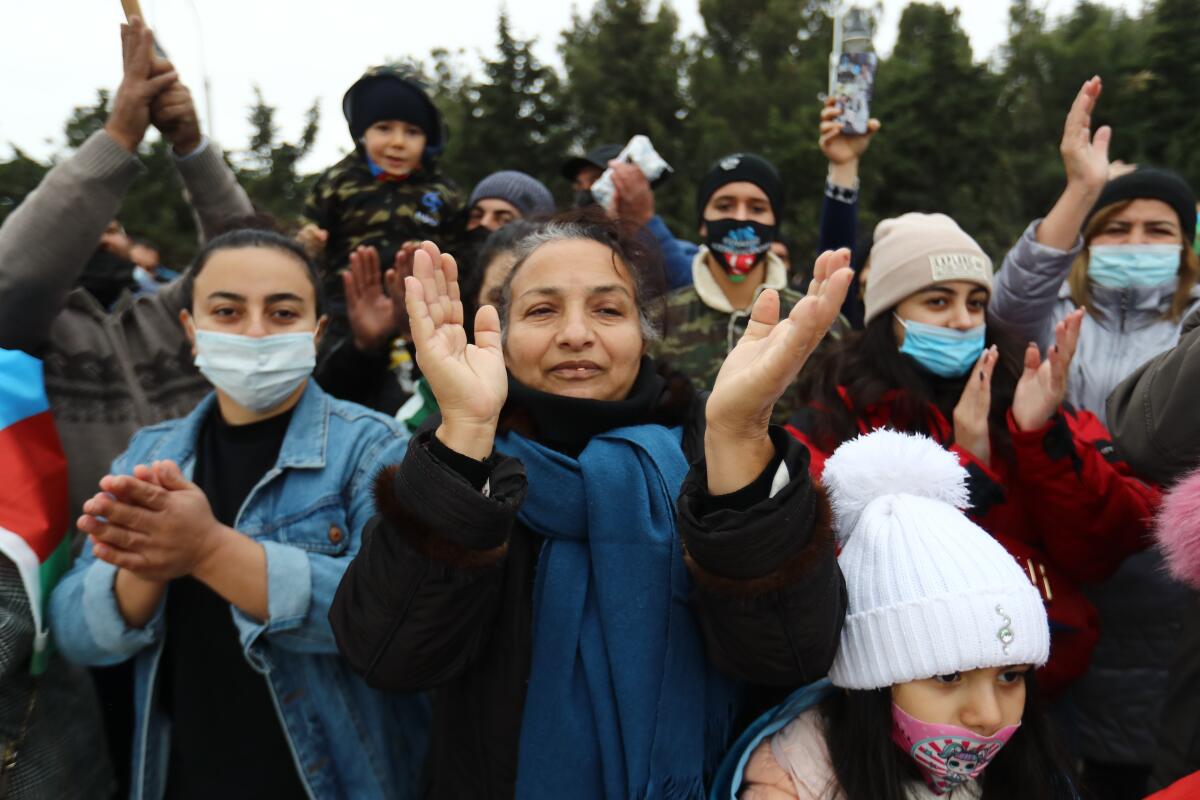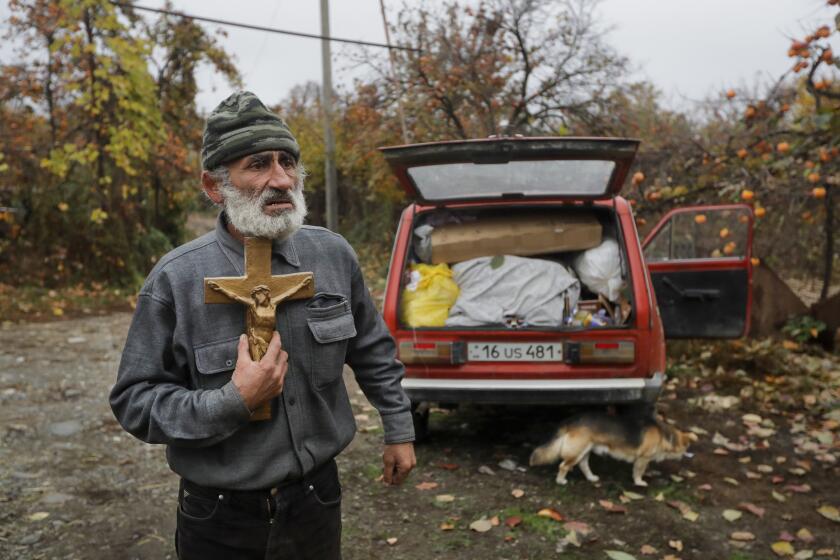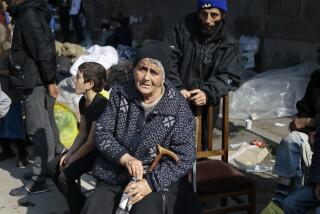Azerbaijan hails handover of region ceded by Armenia

- Share via
MOSCOW — Azerbaijan’s president declared Friday that his forces have taken control of the Aghdam region, a territory ceded by Armenia in a cease-fire agreement that ended the fighting over Nagorno-Karabakh.
The truce, brokered by Russia last week, stipulated that Armenia hand over control of some areas it holds outside Nagorno-Karabakh’s borders to Azerbaijan. Aghdam is the first one to be turned over.
“Today, with a feeling of endless pride, I am informing my people about the liberation of Aghdam,” Azerbaijani President Ilham Aliyev said in an address to the nation. “Aghdam is ours!”
Crowds of people carrying national flags gathered in the Azerbaijani capital, Baku, to celebrate the handover of the Aghdam region.
Nagorno-Karabakh lies within Azerbaijan but has been under the control of ethnic Armenian forces backed by Armenia since a separatist war in the mountainous region ended in 1994. That war left not only Nagorno-Karabakh itself but also substantial surrounding territory in Armenian hands.
Heavy fighting that flared up Sept. 27 marked the biggest escalation of the decades-old conflict between the two former Soviet nations in more than a quarter-century, killing hundreds and possibly thousands of civilians.
Armenia raises the number of its troops killed in fighting over Nagorno-Karabakh to 2,425 as a political crisis brews over its truce with Azerbaijan.
The truce last week came two days after Azerbaijan, which had made significant advances, announced that it had seized the strategically important city of Shusha. (Armenians call the city Shushi.)
Aliyev said Friday that Azerbaijan was taking over the Aghdam region “without a single shot or losses” and called it a “great political success” that would not have been possible without military gains.
“Azerbaijan was able to achieve what it wanted on the political arena after having won a brilliant victory on the battlefield,” Aliyev said.
The agreement, celebrated as a victory in Azerbaijan, has left many Armenians bitter. Mass protests erupted in the Armenian capital, Yerevan, immediately after the peace deal was announced last week, and many ethnic Armenians have been leaving the territories that are to be handed over to Azerbaijan, setting their houses on fire in a bitter farewell gesture.
Armenia and Azerbaijan enlist artists, lobbyists and online activists in a 21st century propaganda war in their fight over Nagorno-Karabakh.
Although regaining the region is a triumph for Azerbaijan, the joy of returning is shot through with grief and anger. The region’s main city, Aghdam, was once home to 50,000 people and was known for its white homes and an elaborate three-story teahouse. But the city is now in such ruins that it’s sometimes called the “Hiroshima of the Caucasus.”
After Azeri residents were driven out in 1993 by fighting, they were followed by Armenians who stripped the city bare, seeking both booty and construction materials. One of the city’s happier eccentricities, the bread museum, is in ruins. The cognac factory is gone.
Today, the only structurally whole building is the mosque. From the top of the elaborately patterned minarets, the view is of a vast expanse of jagged concrete and houses reduced to shells, all encroached upon by a quarter-century’s growth of vegetation.
More to Read
Sign up for Essential California
The most important California stories and recommendations in your inbox every morning.
You may occasionally receive promotional content from the Los Angeles Times.












